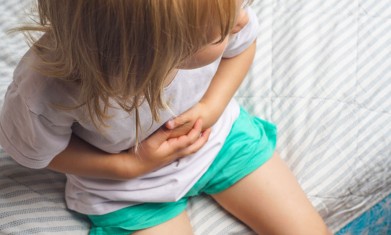By Registered Health Visitor – Julia Headland

I thought I would do a quick blog on constipation as it is a common condition that I have been asked about quite a lot recently. Constipation is a condition that can quite often be resolved with a few tweaks, depending on the cause however it is important to ensure that it is diagnosed and managed early to avoid complications and to prevent it from becoming a chronic condition.
Symptoms of Constipation
Your child may be constipated if:
• They have not done a poo at least three times in the last week
• Their poo is large and hard
• Their poo looks like “rabbit droppings”
• They are straining or are in pain when they poo
• They have some bleeding during or after having a poo because their poo is large and hard
• They have a poor appetite or stomach pain that improves after they poo.
(NHS,2022)
Often, they may have accompanying symptoms such as being irritable and unhappy, loss of appetite, tiredness,
excessive flatulence and/or foul-smelling wind and stools and abdominal discomfort or pain. Sometimes, if your child is over 1 years old, soiled pants or diarrhoea can be a sign of constipation as the runny poo can leak out around the constipated poo and this is known as overflow soiling.
Causes of Constipation

• Diet – not eating enough high fibre foods like fruit and vegetables
• Dehydration – not drinking enough fluids
• Toilet training – feeling pressured or interrupted whilst potty training
• Emotional stress/feeling worried – common examples are moving home or nursery and other changes of routine
• Medication side effects
• Not being regularly active
Treatment
- It is unusual for exclusively breastfed babies to suffer with constipation; if a baby has constipation and has not yet been weaned onto solid foods, you can give them cool, boiled water in between their feeds. Try not to give too much though as they might be too full to drink their feeds. Please continue to make up the feeds as normal (as per the manufacturers guidelines) and not to dilute or over concentrate the formula milk.
- For babies who have already been weaned, make sure you give them plenty of water; you can also offer diluted orange juice after the age of 12 months.
- Include lots of fibre rich foods such as fruit and vegetables. Fruits that are particularly good for constipation
include apples, raspberries, pears, peaches, apricots, plums, prunes, grapes, blueberries and strawberries. - Toddlers who experience constipation should be given regular frequent meals and encouraged to be active.
- Teach toddlers to go to the toilet as soon as they have the urge to go rather than holding on to it.
- Getting your child to sit on the toilet or potty regularly after meals and before bedtime.
- Ensure that your child can place their feet flat on the floor whilst going to the toilet, easy to do if your child is on the potty but if they are on the toilet and their feet don’t touch the ground, give them a stool to place their feet on as this is a much better position to encourage pooing.
If the problem has not improved after trying all the suggestions above, they may need to try an osmotic or stimulant laxative such as Lactulose or Senna.
Important: If your child’s constipation is accompanied by other symptoms such as a distended tummy with vomiting, please seek medical attention as soon as possible.
———End———
For those people I have not yet met, my name is Julia Headland and I am a registered health visitor and registered general nurse with a degree in public health and over 20 years of experience. I am very pleased to work alongside the Norfolk House Nursery team.
You can arrange to meet me for confidential advice or guidance about your child’s health or development; during the pandemic these consultations are being conducted by Zoom or telephone.
My consultations are free of charge and they are confidential.
You can book an appointment with me via the Norfolk House Nursery staff.
You can also follow me on Facebook if you wish:
